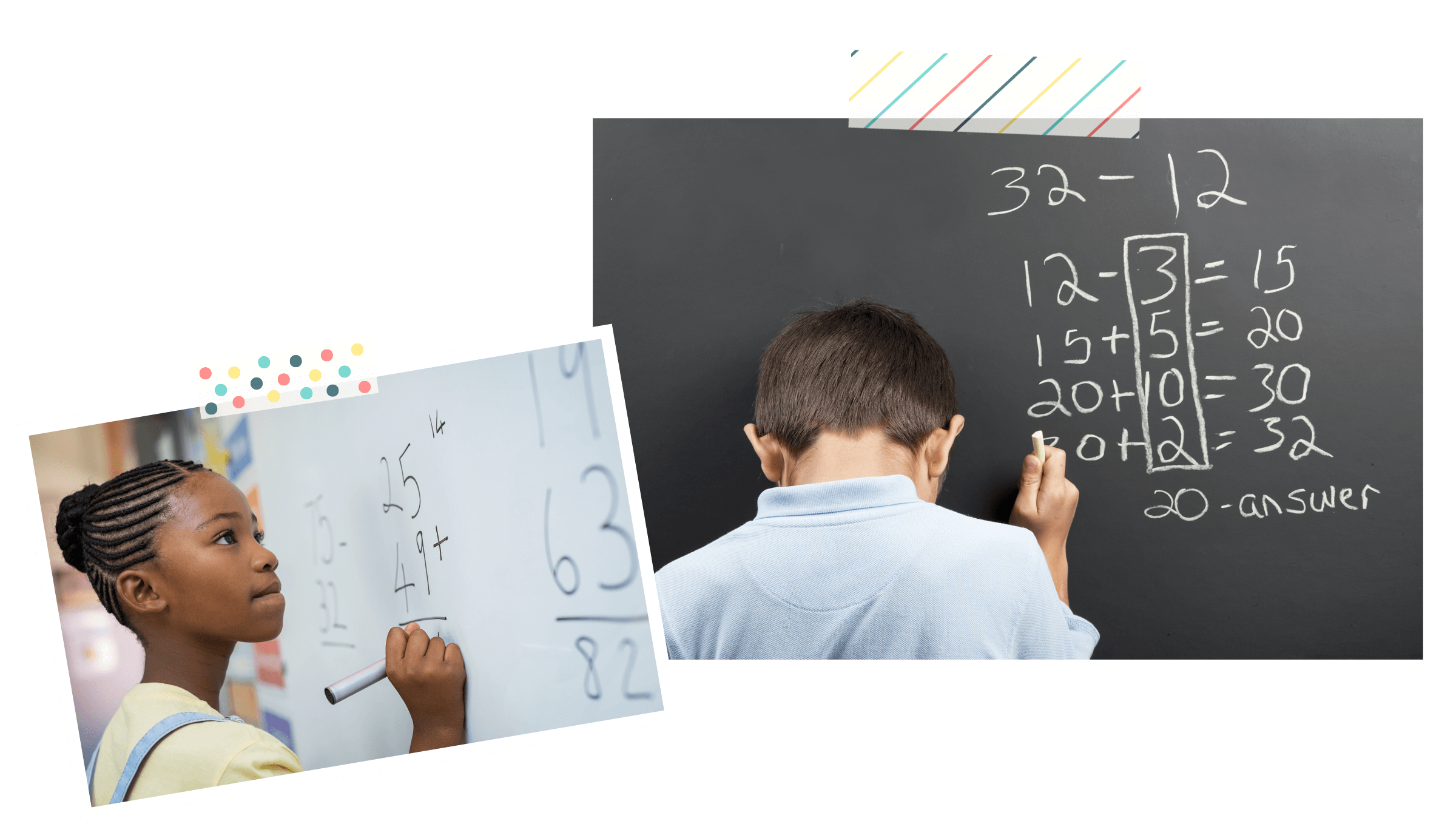In my last post, I introduced the notion of developing number fluency for our young mathematicians in order to help them be flexible, accurate, and efficient in their numerical problem solving. But what does it actually mean to be fluent in mathematics? And how do we support the growth of a fluent mathematician?
Let’s take a step back and first look at fluency in a more traditional context. A fluent reader is able to decode symbols on a page in a way that brings the meaning behind those words to life. They use appropriate phrasing and intonation to convey a character’s feelings, an intended message, or an author’s purpose.
A fluent language learner not only repeats the words they have learned, but understands the meaning behind the words in order to respond in a variety of ways to questions and comments given the overall situation.
It is widely accepted that we would not consider a reader fluent even if they could read 150 words per minute, but could not comprehend or explain what they read. Likewise, we would not consider a person fluent in a language if they rapidly repeated words and phrases, but did not use them appropriately in a given situation.
However, in mathematics we often equate speed with success rather than fluency. What is it about mathematics that drives us to be the fastest? We all grew up with the “mad minute” striving to answer 60 multiplication problems in less than a minute. We played games like “Around the World'' where the quickest student was deemed the winner, otherwise known as the smartest math student in the room. We spent hours each day with those relentless flashcards trying to beat our time and struggling to get through the deck. These days, not much has changed. Every iPad app that claims it will help your child master their math facts comes with a built-in timer, flashcards are still the go-to resource for many families, and those “mad minutes” are still causing anxiety for students.
When we speak about math fluency, our focus should be on the meaning behind the numbers and the connections they have to each other just like it is with language learning. However, with the emphasis placed on speed it really means we’re valuing memorization over understanding.
How often do you perform your job based solely on memorization? My guess would be not very often. As adults we rely on critical thinking skills, logical reasoning, analysis, and reflection to make the choices we do, both at home and at work. We should be focused on raising a generation of critical thinkers and problem solvers so that they can use these skills as adults in the workforce. Children who can reason abstractly and think logically are demonstrating that they truly understand numbers and do not just rely on memorization.
Memorization versus Understanding
The key difference between memorization and understanding is strategy. When a child memorizes something, it requires little to no strategy. Maybe they learn a cute rhyme (8 and 8 went through the door, 8 times 8 is 64!) or a mnemonic device (Who remembers SOHCAHTOA?) to boost their memory, but those aren’t connected to deep understanding. There’s nothing about 8 and 8 walking through a door that relates to that fact that 8 groups of 8 is a total of 64. This is not to say that memorization isn’t useful. It is good for things when the information doesn’t connect to something else - a street address, a phone number, a series of keystrokes on the Xbox controller, etc. When a student learns mathematics through memorization, that is the only thing they have to fall back on. If they can’t remember the answer, the rhyme, or the mnemonic, they get stuck.
However, when a student learns numerical operations through strategy, they can apply the strategy in a multitude of situations because strategies are flexible. Strategies connect concepts together. Strategies lead to numerical fluency.
The ultimate goal for students is to be flexible, accurate, and efficient in their numerical operations. And yes, at some point we do want them to be able to recall their facts in a relatively quick manner. At some point, students will need to begin using higher level thinking for things like factoring polynomials and graphing functions. If at that point they are still struggling with their basic math facts, this will just add to the complexity of the new concept and can cause frustration. But, for now, in elementary school, let’s give them the time to explore, to discover the relationships between numbers and operations, to test out different strategies, and to create a true understanding of number sense. Eventually, if students strategize enough they can get to the point where they use a strategy (or strategies) so often that it can become automatic and quick or efficient. By slowing down now and developing a true conceptual understanding, we have the option to speed up later because there will be fewer gaps to fill in.
So, if I’m saying throw away the flashcards, and get rid of the “mad minutes”, how then are you supposed to help your children develop numerical fluency? Join me on April 1, 2021 at 7:30 pm to discuss this and learn some practical strategies to help
Join us for a New KQ Workshop:
What is a Mathematician?
with Alissa Helgesen
Thursday, April 1
7:30 pm
Written By Alissa Helgesen
Math & Workshop Specialist at Keating Quigley
Offered by Keating Quigley Educational Advisors
Keating Quigley Educational Advisors is a Greenwich-based educational advising practice that partners with domestic and international families to provide highly personalized educational consulting services for Nursery through Grade 12 students. Services include school search support, essay guidance, social-emotional mentoring, relocation support, and enrichment workshops.








